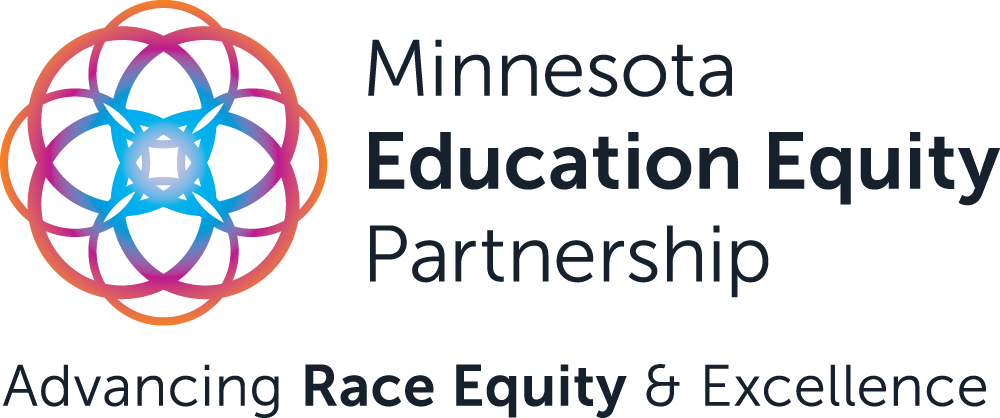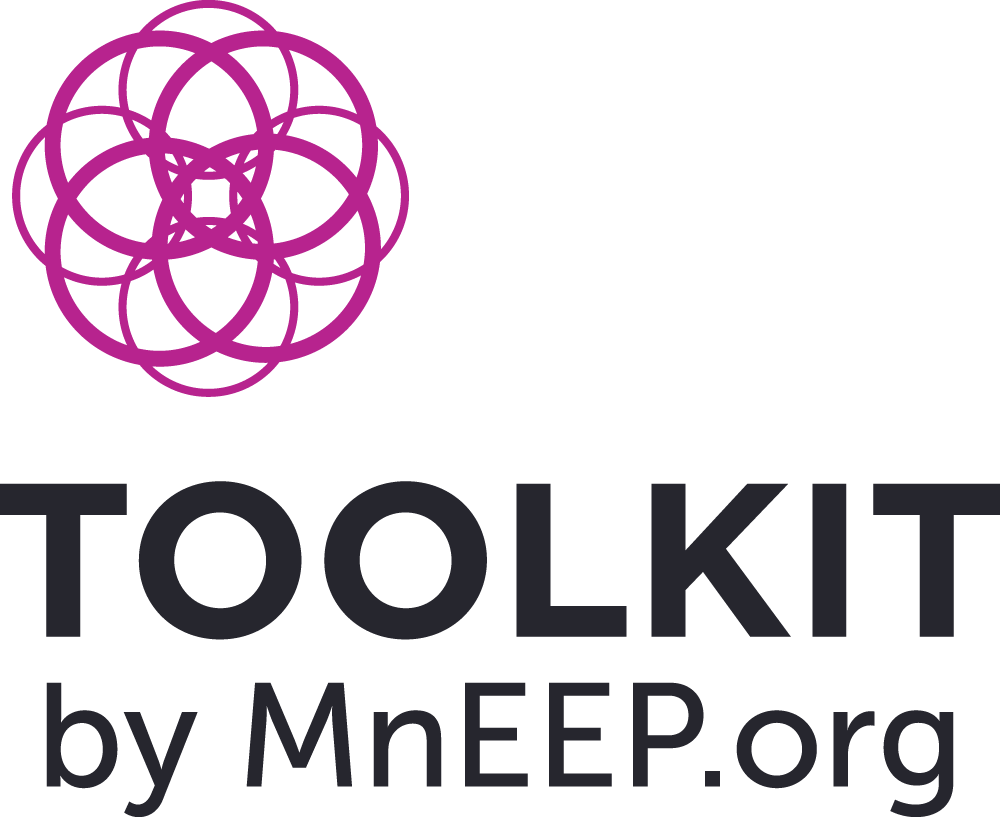School Climate & Racial Equity: Educator Actions
A toolkit for creating change in your classroom and your district.
Get the tools you need as educators to build racial justice in Minnesota classrooms and support all students in their success.
In this Toolkit

Understanding Implicit BIas
“As an educator who trains new teachers on emerging student populations, I work to help them understand implicit bias and how it can quietly shape every interaction we have with our students—and set them up on wildly variant paths in the future. I believe justice in education starts with us getting it right in the classroom.”
What is Implicit bias?
Also known as implicit social cognition, implicit bias refers to the attitudes or stereotypes that affect our understanding, actions, and decisions in an unconscious manner.
Implicit bias isn’t something that we can see and tap into. Rather, implicit bias is ingrained, unconscious attitudes or stereotypes about people that impact our behavior towards them.
Why does implicit bias matter?
Because our implicit biases often predict how we’ll behave more accurately than our conscious values.
Implicit biases lead to institutional racism that harms students in the classroom.
These biases, which encompass both favorable and unfavorable assessments, are activated involuntarily and without an individual’s awareness or intentional control.
Residing deep in the subconscious, these biases are different from known biases that individuals may choose to conceal for the purposes of social and/or political correctness. Rather, implicit biases are not accessible through introspection.
The implicit associations we harbor in our subconscious cause us to have feelings and attitudes about other people based on characteristics such as race, ethnicity, age, and appearance.
These associations develop over the course of a lifetime beginning at a very early age through exposure to direct and indirect messages. In addition to early life experiences, the media and news programming are often-cited origins of implicit associations.
Key Characteristics of Implicit Biases
Everyone possesses them, even people with avowed commitments to impartiality such as judges.
They are not mutually exclusive and may even reinforce each other.
The implicit associations we hold do not necessarily align with our declared beliefs or even reflect stances we would explicitly endorse.
We generally tend to hold implicit biases that favor our own ingroup, though research has shown that we can still hold implicit biases against our ingroup.
Our brains are incredibly complex, and the implicit associations that we have formed can be gradually unlearned through a variety of debiasing techniques. It’s important to remember: Implicit biases can be unlearned! And it’s essential, as educators, to do the work to get there.
Learn more with with the Kirwan Institute for the Study of Race & Ethnicity’s Implicit Bias Module Series.
How implicit bias plays out in Minnesota classrooms
Implicit bias harms students of color and American Indian students in Minnesota
at an alarming rate.
Implicit bias and microaggressions lead to inequitable punishments for students of color and American Indian students.
Nationally, black students are suspended three times as often as their white peers. In Minnesota, it’s eight times as often.
A 2012 investigation found that “17 percent, or one out of every six black schoolchildren enrolled in K–12, were suspended at least once,” compared with “one in 20 (5 percent) for whites.”
Black girls ages 5 to 14 have been viewed by adults as “less innocent” than white girls of the same age, which may be a factor in the disparity in suspension rates, according to a 2017 report by Georgetown Law’s Center on Poverty and Inequality.
What’s more, key data from the MnEEP report Excluded: How Race Plays a Role in Exclusionary Practices in Special Education in Minnesota shows how implicit bias and racialized perceptions of ability and disability lead to special education identification, placement into restrictive educational settings, and exclusionary discipline practices that negatively impact educational outcomes for students of color and American Indian students.
- American Indian students in Minnesota are more than 4x more likely than White peers to be identified with a disability.
- Black students are more than 6x more likely than White peers to be placed in restrictive special education.
- Black students represent 12 percent of students with disabilities, but constitute 33 percent of physical restraint use in restrictive settings.
These exclusionary practices are a human rights violation that impact student outcomes today, and in the future. Studies show that students who experience restrictive educational settings or exclusionary discipline practices that remove them from the classroom are more likely to repeat a grade, drop out of school, and become involved in the juvenile justice system.
It’s essential that Minnesotans work to disrupt a system that is leaving POCI students out of opportunities to succeed.

Transforming Implicit Bias
Tools for interrupting implicit bias in the classroom
How to "De-bias"
Dr. Devine’s research has found that three conditions need to be in place for individuals to successfully “de-bias”:
Intention: You have to acknowledge that you harbor unconscious biases and are motivated to change.
Attention: You have pay attention to your triggers and know when stereotypical responses or assumptions are activated.
Time: You have to make time to practice new strategies designed to “break” your automatic associations that link a negative judgment to behavior that is culturally different from yours.
De-biasing requires a level of metacognition. In this case, you are not thinking about your thinking, but thinking about your unconscious reacting.
Devine and her colleagues developed a “multi-faceted prejudice habit-breaking” intervention that lasted eight weeks. Participants were given a “toolkit” of five strategies, and asked to practice at least three (3) of them consistently on a weekly basis.
Four strategies break the habit of prejudice
Re-Association (Stereotype Replacement): An individual recognizes that he or she is responding to a situation or person in a stereotypical fashion. (S)he considers the reasons and actively replaces this biased response with an unbiased one. Another way to use this strategy is to reframe negative associations such as, “Black students are loud and disruptive. A reframe would be, “African American students are enthusiastic and energetic.”
Refuting (Counter-stereotypic Imagining): Once a person recognizes she’s stereotyped a student of color, she thinks of examples that prove the stereotype to be inaccurate.
Perspective-taking: This involves stepping into the shoes of a stereotyped person. What does it feel like to have your intelligence automatically questioned, or to be trailed by detectives each time you walk into a store? Perspective-taking can be very useful in assessing the emotional impact on individuals who are constantly being stereotyped in negative ways. It is also a way to checking one’s self if you begin to judge a person of color for reacting a particular way in a stressful situation.
Increasing Opportunity for Positive Contact: Another strategy for reducing implicit bias is to actively seek out situations where one is likely to be exposed to positive examples of diverse groups of people, whether at a farmers market, community event, or by seeking out personal contact personal contact through shared group activities with a diverse community.
Take: The Harvard implicit bias test
Take a short test to learn about your implicit associations about race, gender, sexual orientation, and other topics. Project Implicit is a non-profit organization and international collaboration between researchers who are interested in implicit social cognition —thoughts and feelings outside of conscious awareness and control. The goal of the organization is to educate the public about hidden biases and to provide a “virtual laboratory” for collecting data on the Internet.
Listen: Harvard EdCast Unconscious Bias in Schools
Many educators struggle with unconscious bias in their roles at school, and often in ways that can unknowingly perpetuate racism and negatively affect students. In this episode of the Harvard EdCast, Tracey Benson, Ed.L.D.’16, and Sarah Fiarman, Ed.M.’05, Ed.D.’09, offer ways to address these issues directly, and outline how educators can start this work in their schools. Benson, an assistant professor at University of North Carolina at Charlotte, and Fiarman, director of leadership development at EL Education, are authors of the book, Unconscious Bias in Schools.


